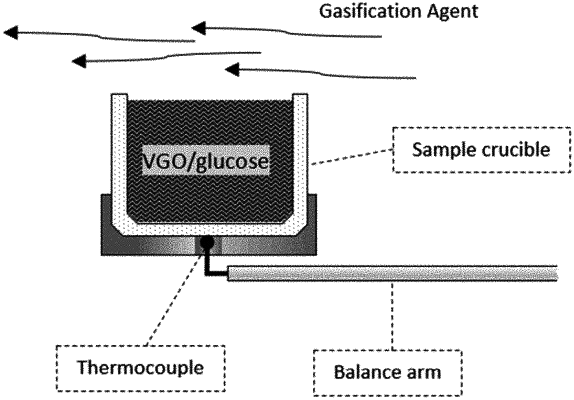| CPC C10J 3/06 (2013.01) [C01B 3/02 (2013.01); C10J 3/20 (2013.01); C10J 2300/092 (2013.01); C10J 2300/0906 (2013.01); C10J 2300/0916 (2013.01); C10J 2300/0953 (2013.01); C10J 2300/0956 (2013.01); C10J 2300/0969 (2013.01)] | 16 Claims |

|
1. A non-isothermic process for producing syngas, the process comprising:
co-gasifying a feedstock comprising vacuum gas oil (VGO) and a biomass comprising glucose, and optionally further lignin and/or cellulose, by ramped heating the feedstock at a rate in a range of from 10 to 50° /min to a temperature in a range of from 306 to 378° C., thereby producing syngas comprising hydrogen and carbon monoxide,
wherein the co-gasification is performed using a purge gas, carrier gas, or gasification agent supplied at a flow rate in a range of from 100 to 200 mL/min,
wherein the VGO comprises C20 through C50 hydrocarbons and boils in the range of 350 to 600° C.,
wherein the biomass has a C:H:O ratio in wt % of 35 to 40:4 to 6:50 to 55,
wherein the feedstock comprises the biomass in 25 wt. % and the VGO in a range of from 70 to 80 wt. %, each based on a total weight of the feedstock, and
wherein the process produces syngas having a higher content of hydrogen than an otherwise identical process that uses a feedstock consisting of the VGO, coke, or coal.
|